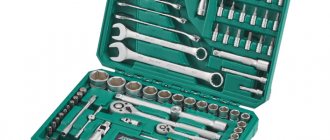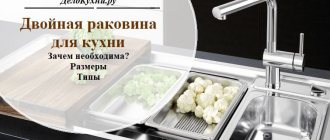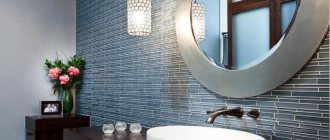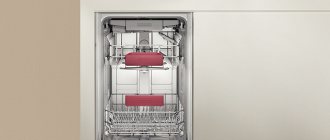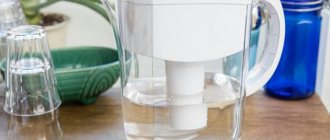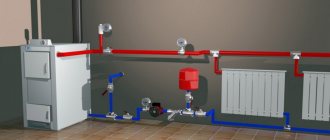An angle grinder, better known as an angle grinder, is a serious and dangerous tool. But it is quite difficult to do without the use of angle grinders during construction and even minor repair work. The use of an angle grinder reduces labor costs and speeds up the process. Therefore, when working with angle grinders, it is extremely important to follow safety precautions. One of the significant points is the protection of the face, because sparks, scale, small particles of metal, grinding disc and other materials can damage the skin and mucous membranes.
Rating of the TOP 7 best dust extractors for an angle grinder
| Place | Model | Price |
| #1 | DIOLD KZV-125 | |
| #2 | DIOLD KZV-125 U | |
| #3 | Mechanic Air Duster 125 (19568442013) | |
| #4 | DIOLD KZV-125 R | |
| #5 | DIOLD KZV-180 | |
| #6 | Grilling housing for angle grinders, 125 mm, DEWALT DWE46225-XJ | |
| #7 | Mechanic Air Duster 230 (19568442014) |
Page navigation:
How not to make a mistake with your choice
The choice of protective clothing is important because it is related to health. The first thing you need to consider when buying glasses or a screen is the specifics of the work. Protection must ensure the protection of a person from mechanical, chemical or thermal effects. Depending on the type of impact, the materials used differ.
The protective equipment may have a built-in fan. It is needed if there is a risk of glass fogging. Open glasses do not have fans, as there is natural ventilation.
Another important point is the material of manufacture. More often it is impact-resistant glass, plexiglass or polycarbonate. Individual elements can be made of silicone, plastic or metal.
Glasses and screens should not cause discomfort. An excellent option is a device with arms that can be adjusted and adjusted.
What features of dust extractors for grinders should you pay attention to when choosing?
When planning to purchase a dust extractor for a sander, pay attention to the following points:
- Well-known, well-established manufacturers rarely fail. Therefore, if you have the financial opportunity, purchase a device from a well-known company.
- Buy a casing with the highest level of protection for working with brickwork, stone and concrete surfaces.
- Choose a model that is suitable for modifying your existing angle grinder and with the appropriate nozzle size , otherwise the casing will not be able to be correctly aligned and secured properly, and it will allow dust to pass through.
- The casing must be safe for humans , so powder coating on the surface is an ideal choice.
- The kit must contain an instruction manual, technical description and certificate.
Safety precautions when working with angle grinders
Compliance with solid waste is the key to safe work and high-quality results without negative consequences for health and life.
- Using a protective shield when working with an angle grinder is an important component of the process that cannot be ignored;
- In addition to the mask, before work, put on protective gloves and a suitable suit (preferably a special one) to protect not only your face, but also the rest of your body;
- For each type of material, use only a specially designed disc;
- Check tool fastenings and guards before starting work;
- Before work and after changing the attachment, check the tool at idle speed;
- Work in a comfortable and stable position;
- The most dangerous thing when working with an angle grinder is the rupture of a disk rotating at high speed. Splinters can cause fatal damage, so it is extremely important to purchase high-quality protective materials and use the machine in accordance with safety precautions.
Under no circumstances remove the protective casing from the angle grinder to lighten the weight of the tool!
Remember, life and health are the most important. Do not neglect safety precautions and use protective equipment to avoid damage to the skin and eyes.
Review of the best models
Rating of the TOP 7 best dust extractors for an angle grinder in terms of price and quality ratio.
DIOLD KZV-125
One of the most popular models of casings today. Good workmanship, excellent functionality.
You can remove old Soviet-era paint in 30 seconds; there is not a single gram of dust when sanding concrete. Convenient for one-handed operation: does not pull, does not rub.
Compatible with DIOLD vacuum cleaners: having purchased a dust collector of the specified brand, you can connect it to the casing and be 100% calm - even the smallest dust will fall inside the removable box, and not into your lungs or eyes.
The set on sale is as complete as possible: there are adapter rings for different models of angle grinders, an adapter for a pump, a wrench and nut for discs, and even a wrench for fastening the casing.
For working in corners, the casing has a folding part. Convenient quick and easy installation. The cover has a hinged part for working in corners. The brushes are thick and dense. Country of origin: China.
Specifications:
- disc diameter: 125 mm;
- weight: 1.80 kg;
- length: 260 mm;
- width: 100 mm;
- height: 200.
Advantages
- complete set with all adapters;
- excellent combination of price and quality;
- rational acquisition;
- adapter included;
- weighs little.
Flaws
- there are problems with fastening the brush;
- sometimes dust escapes from the moving part of the casing;
- the outer part of the casing is too close to the disk and requires special care in operation.
DIOLD KZV-125 U
Originally shaped protective exhaust hood made of impact-resistant black and red plastic.
Suitable exclusively for angle grinders. Participates in cutting grooves in stone (adjustable in depth and width of the grooves) and concrete slabs, brickwork, and aerated concrete.
Due to the carefully thought-out design of the casing, it is possible to insert into the corner of the surface that needs processing.
It is fully compatible with such models as MShU-1-02, MShU-1-01, MShU-0.95-01, MShU-0.8-02 and MShU-0.7-01.
The kit includes several adapter rings for the mounting diameters of the angle grinder gear journal journal: 40/42/43/44/45/48 mm.
The diameter of the working circles (this is indicated in the instructions for the casing) is 125 mm.
The owner can buy a vacuum cleaner: by connecting the latter to the casing, the dust collecting device will help keep the environment clean, as well as protect the technician from possible sparks and large fragments.
Specifications:
- groove depth (cut): 6-28 mm;
- slot groove width: 8-30 mm;
- weight with packaging (gross): 1.75 kg;
- Dimensions in packaging: 100x260x200 mm.
Advantages
- dimensions;
- fits comfortably in the hand;
- weighs little;
- high-quality plastic;
- wide range of work.
Flaws
- does not fit with Triger WS 125/950, Interskol UShM-125/900 and De Walt models;
- overpriced;
- Only certain circles are suitable.
Mechanic Air Duster 125 (19568442013)
This metal casing is designed for the Mechanic AirDuster angle machine.
Protects the craftsman from sparks generated during work and waste emissions (both large particles and dust).
The design has a universal mount and is suitable for all types of grinding machines.
Compatible with some vacuum cleaners (power must be 1.6 kW or more). The casing does not block the view of cutting, so the whole overall picture will be before your eyes.
The permissible disc diameter is 125 mm. The casing is easy to install and also helps to significantly reduce grating dust when connecting a vacuum cleaner.
Effectively removes dust and small particles from the cutting area and helps reduce the amount of dust that arises, for example, during the cutting process of porcelain stoneware.
Ideal for indoor work. The homeland of the brand is Ukraine.
Specifications:
- weight: 0.33;
- length: 250;
- width: 180;
- height: 35 mm.
- minimum via diameter: 37 mm;
- material: metal.
Advantages
- durable plastic housing;
- convenient dimensions;
- easy to repair;
- efficient disk cooling;
- easy.
Flaws
- overpriced;
- rarely available for sale in the Russian Federation;
- Sometimes debris gets caught under the fold of the rubber adapter.
DIOLD KZV-125 R
An original-looking device for an angle grinder using a circle with a diameter of 125 mm.
It fulfills its task: it removes small particles that can get into the eyes and interfere with work, it protects the master from an accidentally flying piece of equipment.
The clamp for attaching to the seat of the grinding machine is keyless.
The “DIOLD” vacuum cleaner can be connected directly through a hose: the kit includes a pipe, as well as a set of adapter rings for mounting neck diameters of 40/42/45/48 mm.
There are no instructions included, but all the necessary information regarding the operation can be easily found on the Internet. There is a depth adjustment; an adjustment key is included in the kit.
The thickness of the transparent plastic is 3 mm, the remaining parts are painted black. The sliding section allows you to carefully process edges and corners. Metal base.
Specifications:
- diameter: 125 mm;
- weight with packaging (gross): 0.89 kg;
- Dimensions in packaging: 75x165x190 mm.
Advantages
- easy-to-use element;
- affordable price tag;
- durable plastic;
- generates little dust;
- The kit contains everything you need for work.
Flaws
- not suitable for angle grinders De Walt, Interskol angle grinder-125/900 and Triger WS 125/950;
- fixation to a metal plate with a crimp ring only on top with two screws;
- Not suitable for all 125 Bulgarians.
DIOLD KZV-180
Universal guard with very hard protective bristles.
This casing is designed for 180 circles. In order to press the disk to the surface being treated, some force is required.
Part of the casing is rotatable for processing at the ends, clamping washers. The tight fit of the bristles in a circle prevents dust particles from flying away from the grinding area.
Handles corners and edges well. Can be connected to a vacuum cleaner. The kit includes a set of adapter rings for neck mounting diameters of 55/58/61.5/63/65/68 mm.
The warranty period expires one year from the date of purchase; the battery warranty is given for 6 months.
Compatible with LNA models TM DIOLD (MSHU-1.8-01; MSHU-1.8-230; MSHU-2-01; MShU-2.1-01; MShU-2.45-01; MshU-2.45 -230 and a number of others).
Can be used with carbide cup, disc and fiber grinding wheels.
Specifications:
- disc diameter: 180 mm;
- weight: 750 g;
- material: plastic;
- Dimensions in packaging: 95x230x230 mm.
Advantages
- sits firmly on the vacuum cleaner;
- high-quality assembly;
- not flimsy plastic;
- easy to install;
- dense “skirt” made of pile.
Flaws
- Not every diamond blade is suitable in height;
- cannot be mounted on small angle grinders;
- it doesn’t fit well on the grinder and, if you don’t pay attention, it tends to warp;
- cannot be used for cutting or gating.
Grilling housing for angle grinders, 125 mm, DEWALT DWE46225-XJ
This casing is designed for models with a disk diameter of 125 millimeters.
Due to the special design of the structure and the adjustment stopper, it ensures precise and simple depth adjustment.
Compatible with dozens of models, including DWE4056, DWE4156, DWE4203, DWE4246, DWE4559, DWE4579, DWE4597, etc.
The blade visibility window allows the owner to monitor the blade and workpiece during the entire cutting process.
Thanks to the wheels mounted on the base, even on uneven and rough surfaces you can carry out the most smooth cutting without jumps.
The kit also includes a pair of spindle attachments: with their help you can turn your angle grinder into a wall chaser.
The plunge cut function allows you to make absolutely dust-free cuts in all materials. The casing weighs a little, your hands don’t get tired. The warranty period lasts 3 years.
Specifications:
- landing diameter: 125 mm;
- number of wheels: 4 pcs.;
- weight: 1.9 kg;
- diameter: 125 mm;
- size: 260x100x240 mm.
Advantages
- high-quality assembly;
- adjustable cutting depth;
- good plastic;
- minimum dust;
- serves for a long time.
Flaws
- Expensive;
- Normally you can install only 1 disk;
- There are no adapters to secure the vacuum cleaner hose to the casing.
Mechanic Air Duster 230 (19568442014)
Attractive open design with standard retaining nuts (nuts are easy to replace).
Welding was carried out using the spot method.
The casing is covered with powder paint: it does not contain flammable or toxic solvents, so it is practically safe for both the environment and humans.
The paint does not peel off even in areas of increased wear. If the master wants to put the grinder on its side, there is no need to remove the casing, since it does not interfere.
On the back of the package there are brief instructions for using the casing: if you lean the casing against the wall on the air intake side, as indicated there, then there will be no dust during operation.
Suitable for cutting socket boxes, dismantling plumbing booths, etc. Country of origin: Ukraine.
Specifications:
- minimum via diameter: 37 mm;
- material: metal;
- disc diameter: 230 mm;
- weight: 0.66 kg.
Advantages
- ease of use;
- easy to install;
- powder paint does not wear off for a long time;
- has low weight;
- protective coating that is safe for people;
- connection to a vacuum cleaner is possible.
Flaws
- unreliable fastening;
- the thrust screw is unscrewed due to vibrations during operation;
- The angle grinder is not suitable for all casings.
What are safety glasses and shields for?
Personal protective equipment is required for construction-related work. They are important for eye safety. They can be harmed by small solid particles, water, liquid substances, chemicals, bright light, and ultraviolet radiation.
Glasses or shields are required when working in the following areas:
- Finishing work;
- Metallurgy;
- Mechanical engineering;
- Territory cleaning;
- Metal and wood processing;
- Welding work, and others.
Materials
Eye safety is especially important if a person performs work in difficult conditions. Glass protects against chemicals, debris, glass. Such protective equipment is indispensable in the woodworking industry and construction.
Safety glasses can be tinted or clear. The color of the lens can be selected based on your own comfort. If you have to work in bright sun or with welding, then it is better to choose dark glasses.
Products can be in a plastic or metal frame.
Each model offered on the market has its own place in the safety rating. This rating means the lenses have been tested to withstand impact. The more expensive the glasses, the greater the mechanical impact their lenses can withstand.
On the market you can find models with adjustable straps or anti-fog lenses.
The described means of protection are of several types:
- glass;
- plastic;
- plexiglass;
- polycarbonate.
Scratches do not remain on the glass over time, but the problem is that users often complain that the material is heavy and causes discomfort. Glass is also prone to fogging.
Plastic is lighter compared to glass. It is also less prone to fogging. The problem is that scratches quickly appear on it, as a result of which visibility is reduced.
Plexiglas is widely used in medicine and aviation. It owes its popularity to its high strength. If it is destroyed, it is without fragments. Disadvantages include poor resistance to solvents and other chemicals.
Polycarbonate is another option for safety glasses. It does not fog, does not scratch and is lightweight. These glasses are stronger than the other two options, but also more expensive.
An ultraviolet filter is added to the lenses of protective devices.
The main task of safety glasses with an ultraviolet filter is to reflect the long ultraviolet wave UV(A). Such devices can be made with transparent glass or have different colors.
It is important to understand that they do not distort the main color of the image. On the contrary, glasses give the picture clarity; colored lenses can give the image a tint, but not color it in other colors
To manufacture UV protective devices, lenses with several layers of absorbers are used. These layers absorb UV radiation. There is also a polarizing layer. Its job is to protect the eyes from light reflected from objects. This combination of layers allows you to make the visible picture clearer and reduce eye fatigue when working.
Different models may have different degrees of protection. Manufacturers indicate all the information on the temples of the glasses or in the product passport. The UV 400 indicator indicates that the eyes in such models will be protected from A and B waves. With the B-15 marking, the protection will be 85%, and with the B-5 it will be 95%.
Among the features of glasses with an ultraviolet filter are:
- protection against eye opalescence during prolonged work with ultraviolet radiation;
- absorption of waves whose lengths are no more than 365 nm;
- reduction of eye strain;
- providing increased contrast when using powder and capillary non-destructive testing methods to study defects;
- protection against low- and medium-energy impacts;
- protection from solid particles and dust getting into the eyes.
Suitable Tools
There are many options for cutting plexiglass 2 mm and thicker at home. We will analyze in detail the most effective and easily accessible ones.
Hacksaw
In terms of hardness and processing complexity, plexiglass is comparable to beech. It is enough to simply cut it with a hacksaw or, if the amount of work is small, with a homemade cutter made from cutting blade. For processing, choose a blade with frequent small teeth. First, the workpiece is marked and a cutting line is drawn on it. Most often it is straight. Cutting a curved part with a hacksaw is very difficult. It is good to mark with a felt-tip pen or marker. It leaves a clear trace. You can do it differently. Scratch the line with a sharp nail or knife. You need to saw slowly, avoiding excessive heating of the part. To prevent the blade from sticking, it is recommended to periodically water the cutting area with cold water. The cut from the hacksaw is uneven and requires polishing.
Cutter
It is convenient to use for small volumes of work, when the sheet thickness does not exceed 2-3 mm. Construction stores sell cutting equipment. With its help, straight cuts are made, but curved ones are difficult to make. Before cutting, the workpiece is marked. Then press the metal ruler tightly against the intended line. The cutter is carried with force along the sheet. Do this several times to make a cut about half the depth of the plate. Then they place it on the edge of a table or workbench and break off the edge with a precise movement.
The cut is uneven and needs to be sanded. In some cases, a homemade cutter made from a hacksaw blade for metal is used. They take a blade, sometimes even a used one, and give it a sharp “nose” on a grinding wheel to make it easier to saw. The opposite edge will be the handle. It is wrapped with electrical tape. The homemade cutter is ready. They work with it in the same way as with a hacksaw.
Traditional methods for preventing glasses from fogging
Folk recipes are simple and accessible, but have their own nuances. Here are the most popular:
In this article
- Traditional methods for preventing glasses from fogging
- Tips for caring for foggy glasses
- Professional anti-fog glasses
- A piece of solid soap. The lenses of the glasses are rubbed with a dry piece of any scented soap, then the applied mass is evenly distributed over the lens with a soft cloth, while drying the glass (minus - it is difficult to apply an even layer, so the view will deteriorate on rainy days);
- Shampoo. Add warm water to the hair wash in a ceramic bowl in a 1:1 ratio and mix thoroughly until a homogeneous mass is obtained; then the solution is applied to the glass with a piece of clean soft cloth, and wiped dry with another dry cloth (this may leave barely noticeable rainbow stains, which will contribute to the appearance of glare and make it difficult to see);
- Spray for car windows. It is enough to spray it on the inner surface of the glasses lenses and wipe dry (you should remember that auto chemicals are not intended for people; it is undesirable to use such dangerous products);
- Glycerin (liquid). A soft cloth is generously moistened with the solution and the glasses are thoroughly rubbed on both sides, then the glasses should be allowed to dry naturally, and then polished with a dry soft flannel cloth (this method of combating glass fogging takes a lot of time);
- Toothpaste. Squeeze out 1 pea on both glasses from the inside and rub thoroughly with a napkin; after drying, the remaining paste is removed with a soft cloth (however, it is very difficult to clean glasses of dried toothpaste without damaging the surface of the glass);
- Shaving foam. Apply to glass with clean fingers and wipe with a dry cotton pad until completely dry (this method is the least effective due to the texture of the foam being too soft).
All folk remedies are free of charge, because they are available in any apartment, but the above methods are quite time-consuming. Various detergents often have to be reapplied to the glass, after first removing the previous layer of soap or shampoo. It is also inconvenient that mixed solutions of detergents and water cannot be stored; the ingredients will need to be mixed in accordance with the proportions before each application. Folk recipes are quite applicable as a one-time use when the glasses in your glasses fog up and you need to quickly take at least some action.
Multi-level ceiling with a bend, a niche and a cornice
Hello to all specialists. Here I found in the wilds of the Internet one ceiling option that I’m crazy about. Here he is:
I made a tentative drawing based on my room dimensions:
in a circle looking down M1-M3 - lamps in a semicircle looking down P1-P3 - lamps in a line looking down. 1) Because According to the drawing, on the left there will be a niche of 15 cm, and the center of the main circle is located in the center of the room, then to eliminate antisymmetry, I made another linear level on the right of 16 cm. How correct will this be from a design point of view? 2) Red, blue and green colors the lines show the trajectories on which the lamps will lie. 3) The dotted black trajectory of the circle shows the eaves side. - And here is the main question:

